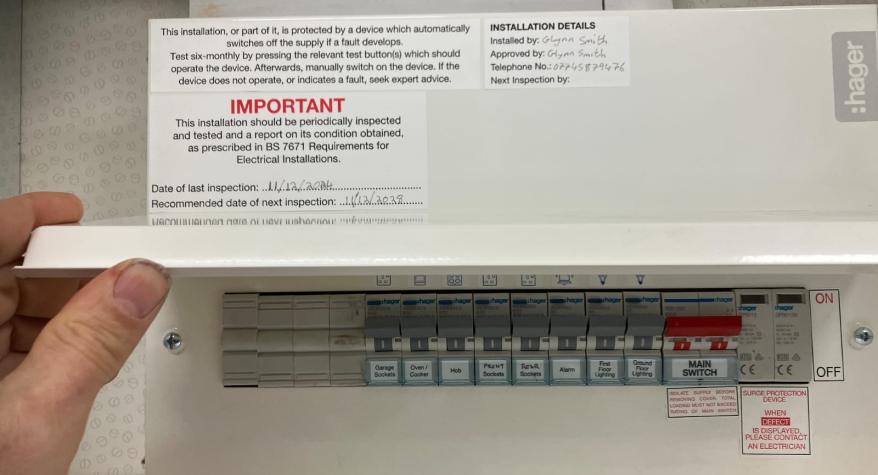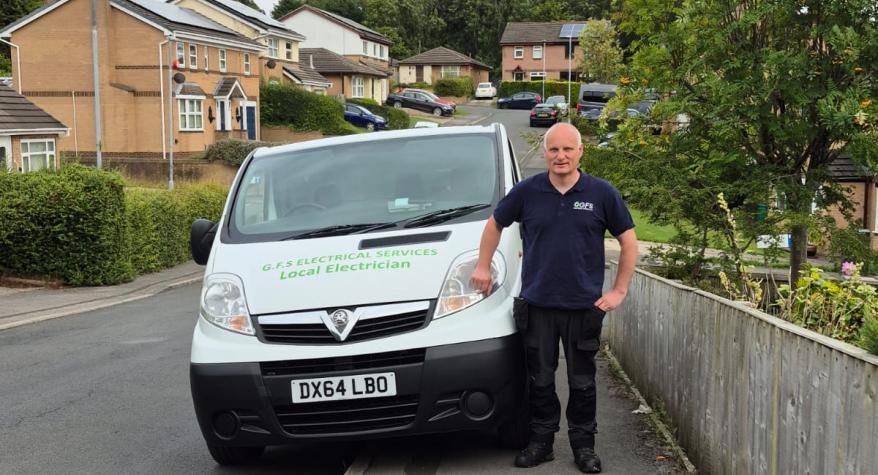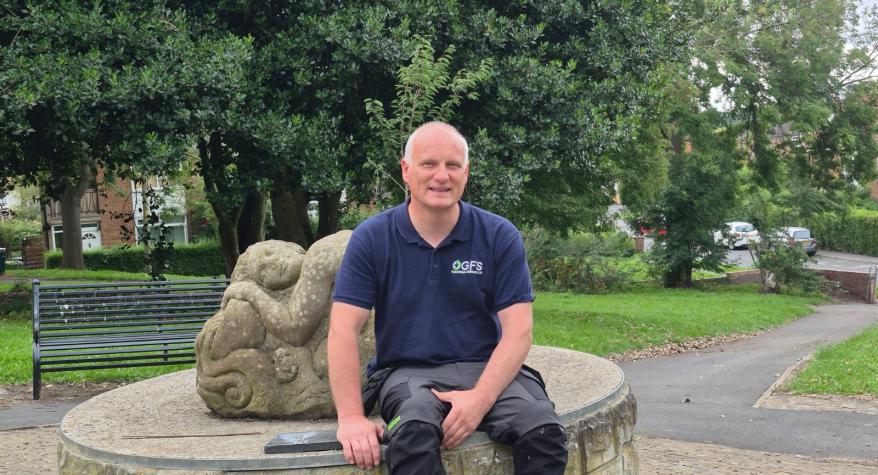Yes. Whenever I upgrade a fuse box, I follow industry best practice guides. Before starting the work, I carry out an Electrical Installation Condition Report (EICR) to confirm the property is safe for the upgrade. All fuse box upgrades are Part P notifiable, which means they are fully tested, certified, and registered with building control. Modern fuse boxes include the latest safety technology to protect both your home’s electrical system and everyone living there.
Yes. Before I upgrade a fuse box, I carry out an Electrical Installation Condition Report (EICR) on the home. This checks the wiring and circuits are safe and suitable for connection to a modern fuse box.
Yes. Under Part P of the Building Regulations, fuse box upgrades must be notified to Building Control. I handle all certification and notification for you, so you receive both the Electrical Installation Certificate and confirmation that the work has been registered.
No. The tests I do before installing the fuse box are the same tests that must be carried out at the end of the job when issuing an Electrical Installation Certificate (EIC), so they’re already included in the price.
If your electrical installation is found to be unsatisfactory and at the end of its life, I will charge a flat £64 for my time and testing and advise that the property requires a full rewire. In this case, I cannot continue with a fuse box upgrade, as it would not make the installation safe. Common reasons for recommending a rewire include:
- No earth on lighting circuits (common in pre-1970s homes).
- Wiring at the end of its lifespan.
- Lead or rubber insulated cables.
- Signs of deterioration, such as green goo.
Modern fuse boxes use RCDs and RCBOs which protect both people and wiring. They provide quicker and safer disconnection in the event of a fault compared to older fuse systems. Upgrading improves the safety of your home’s electrical installation and compliance with current regulations.
For an average house, the process is usually completed within a working day:
- Initial testing (EICR): Up to 4 hours.
- Physical replacement: Around 4 hours.
- Final testing and certification: About 1 hour.
In total, a typical fuse box upgrade takes approximately 1 full day.
The cost of a fuse box upgrade depends on the property and the number of circuits. I provide a clear, itemised quote covering testing, replacement, and any remedial work required.
Plastic fuse boxes can present extra risks in the event of a fire. They may produce toxic fumes, generate intense heat, or weaken escape routes such as staircases. However, if your existing plastic fuse box is not located in an escape route and shows no signs of heat damage, there is no requirement to change it. That said, upgrading to a modern metal consumer unit is advisable for improved fire resistance and safety.
The time depends on the number of circuits, the number of electrical points, whether the system has been modified, and how accessible sockets are. As a guide, a typical domestic EICR usually takes around 4 hours.
Yes, I specialise in small domestic jobs as well as larger ones. From replacing lights and adding sockets to connecting cookers.
Yes, I regularly install extra sockets and lighting to make homes more convenient and practical.
Yes, I connect cookers and hobs safely and in compliance with electrical regulations.
I have a minimum charge, so may not be the most cost-effective option just for changing a bulb. However, often when customers think a bulb has blown, the real issue is a faulty fitting, switch, or circuit. That’s where my expertise is needed to diagnose and fix the true fault.
Yes, I cover Morley and the surrounding areas for emergency electrical callouts. I always aim to respond as quickly as possible.
Yes, frequent tripping usually points to a fault with wiring, an appliance, or the consumer unit. I can test and identify the cause before providing a solution.
I always aim to make the installation safe on my first visit. Where a full repair can’t be completed immediately, I provide a temporary safe solution and arrange follow-up work if needed.
For emergency callouts, I take a payment before leaving my home to cover attendance and the first half hour on site. Payment can be made securely by bank transfer (BACS) or credit card. Any parts required are billed on completion. If more time is needed, I will confirm this and take payment before continuing into the next half hour.
A fuse (or circuit breaker) is designed to protect your home’s wiring and appliances by cutting off electricity if too much current flows. An RCD (Residual Current Device) is designed to protect people by switching off instantly if it detects electricity leaking to earth (for example, if someone touches a live wire). Modern fuse boxes combine both for maximum protection.
If your bathroom fan is connected to a circuit without RCD protection, I can only carry out a like-for-like replacement as part of maintenance. I cannot install a new fan circuit or make modifications without adding RCD protection, because current Wiring Regulations require RCDs for bathroom circuits.
Yes, I need access to every electrical point to operate switches, plug in testers, and check for damage. If points are inaccessible, I must record them as a limitation on the report, which makes the report less detailed. All limitations must be agreed with the person requesting the inspection.
Yes, I carry out both repairs and new installations, from fault finding to upgrades.
I take care to avoid damage when removing or replacing faceplates. However, there can sometimes be slight cosmetic marks. In most cases, these are minor, but occasional repainting or touch-ups may be needed.
For health and safety reasons, I must wear protective footwear while working. I use overshoe protectors to keep your home clean and tidy.
In most cases, yes. Fitting a chandelier often requires access from the room above to ensure it is installed safely and securely. I will discuss this during the quotation and check that your electrical system is adequate
I try to leave the job in the best condition I can. I keep filler in the van for small repairs. For larger plastering work, I recommend using a professional plasterer.
During the quotation stage, I explain what work will be required, including any finishing work that may need to be completed by other trades.
No, I cannot confirm if a ceiling contains asbestos. If you are in doubt, have it tested by an accredited specialist. I can provide a help sheet to guide you on what to do next and who to contact









